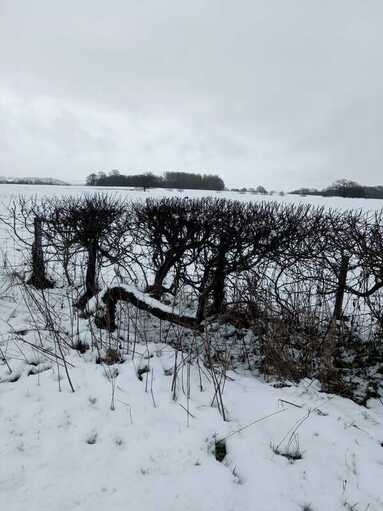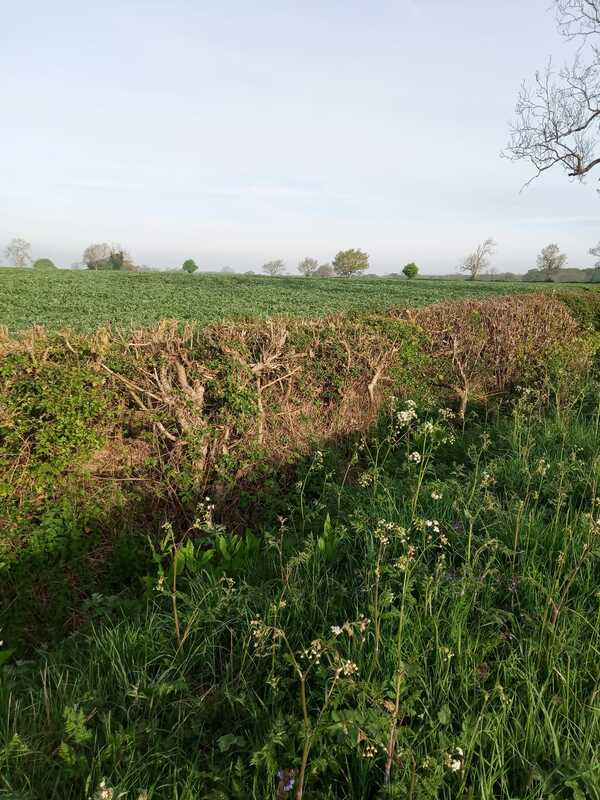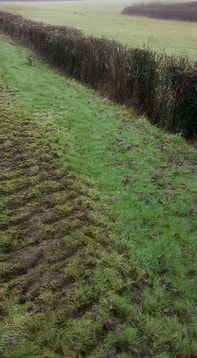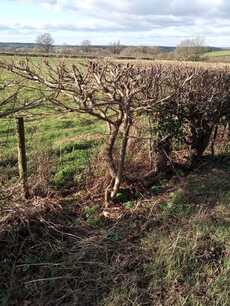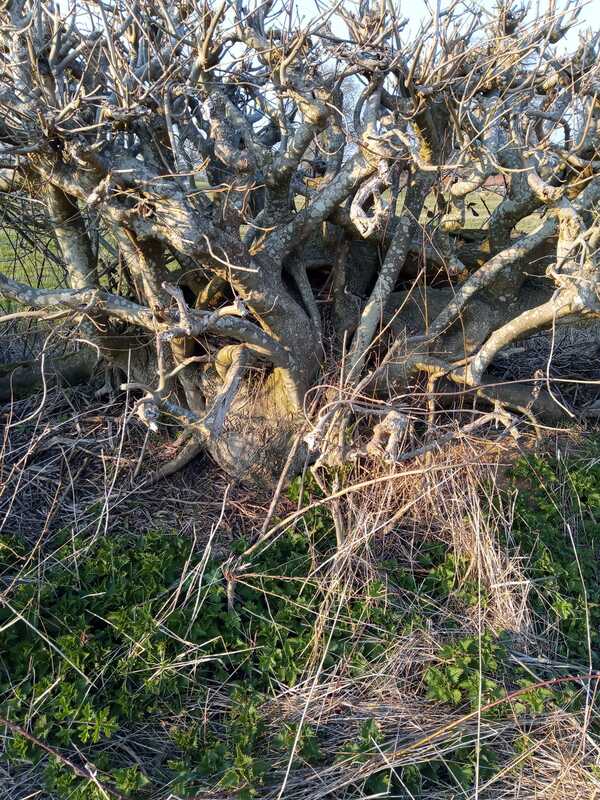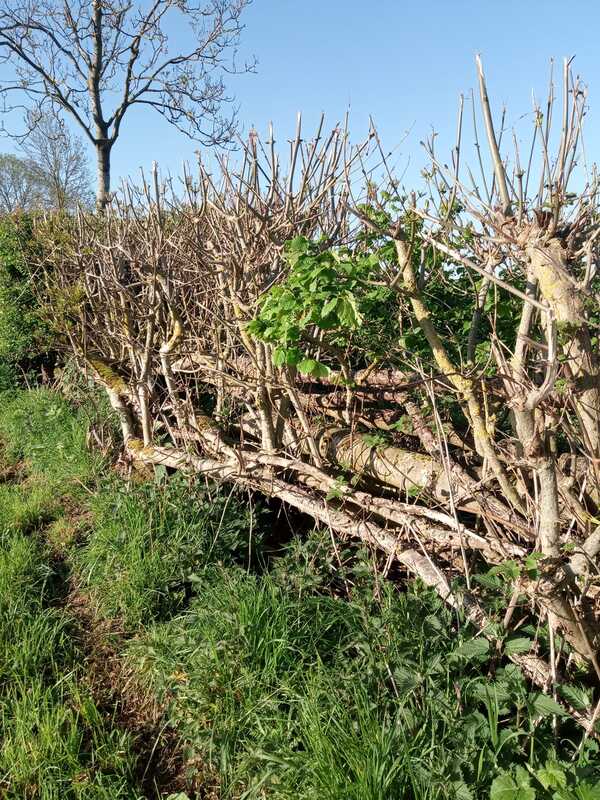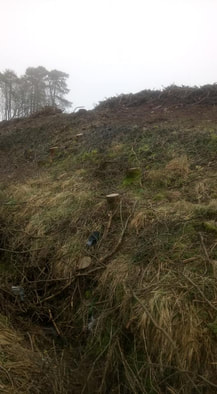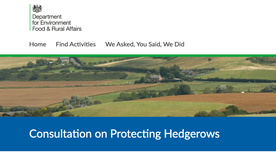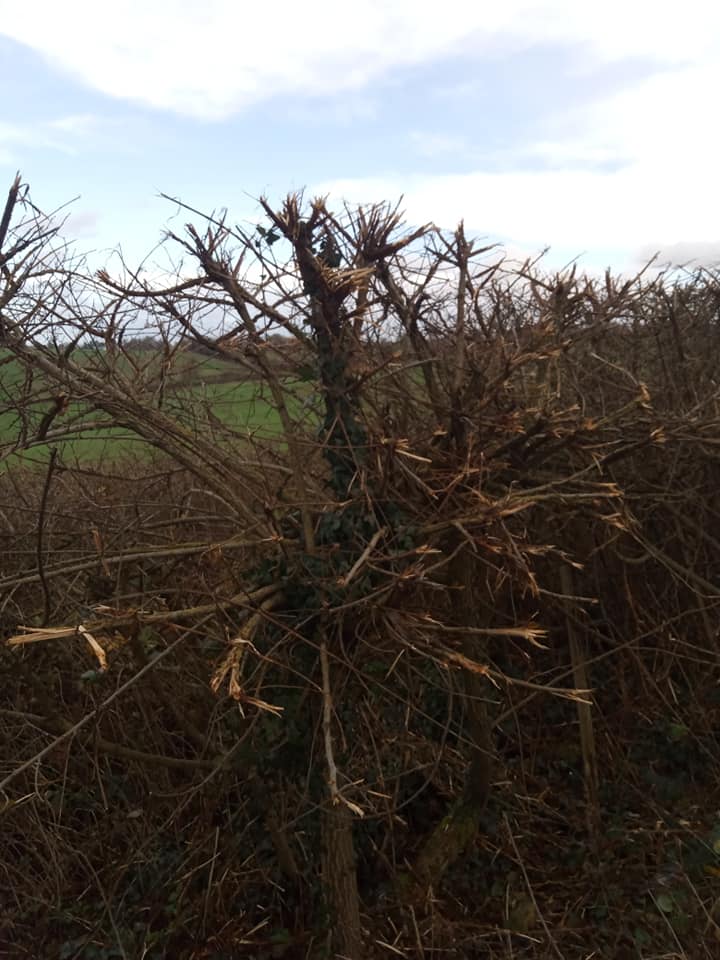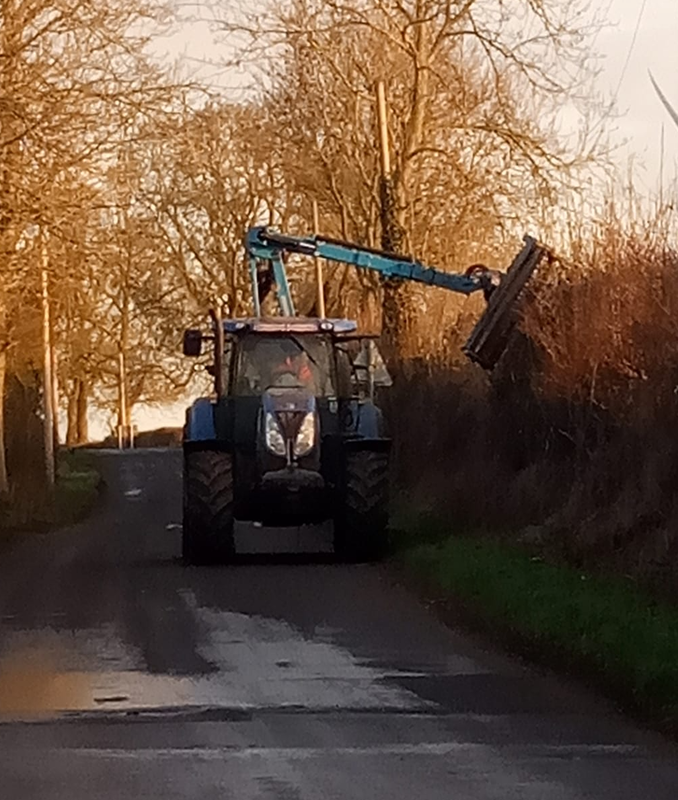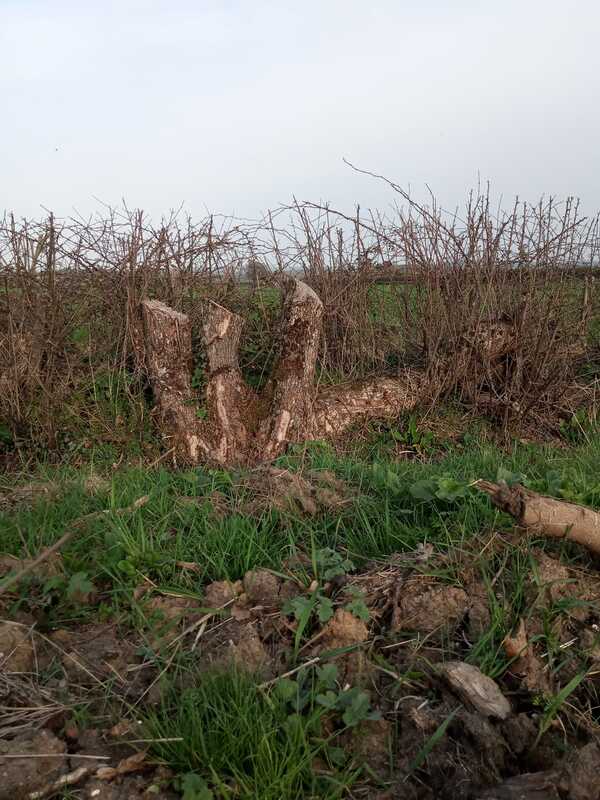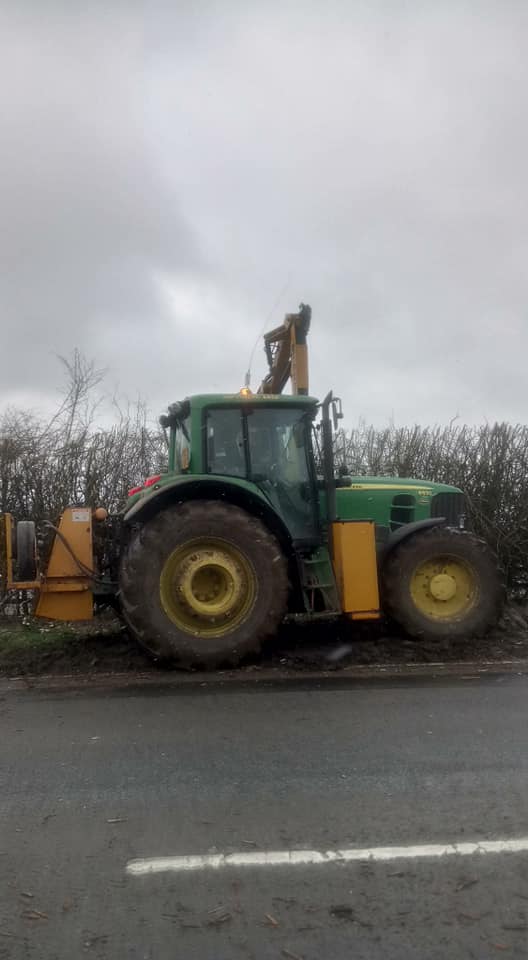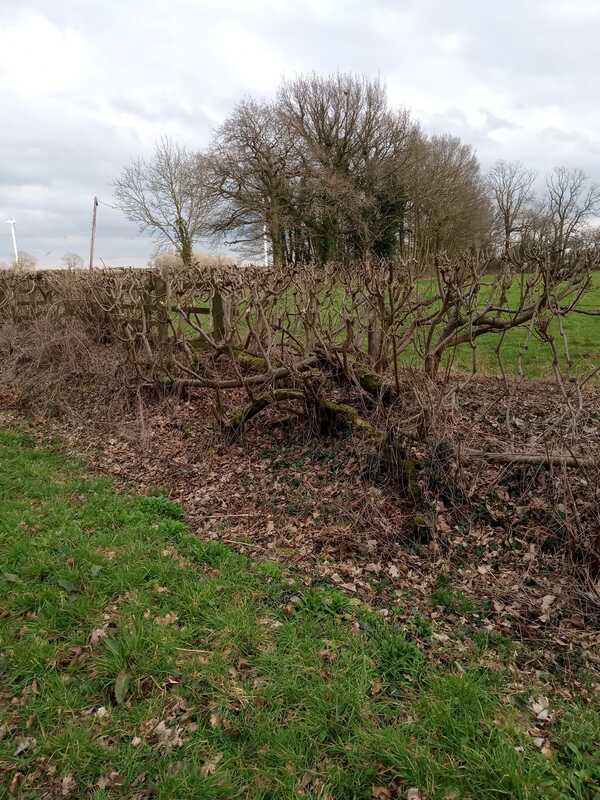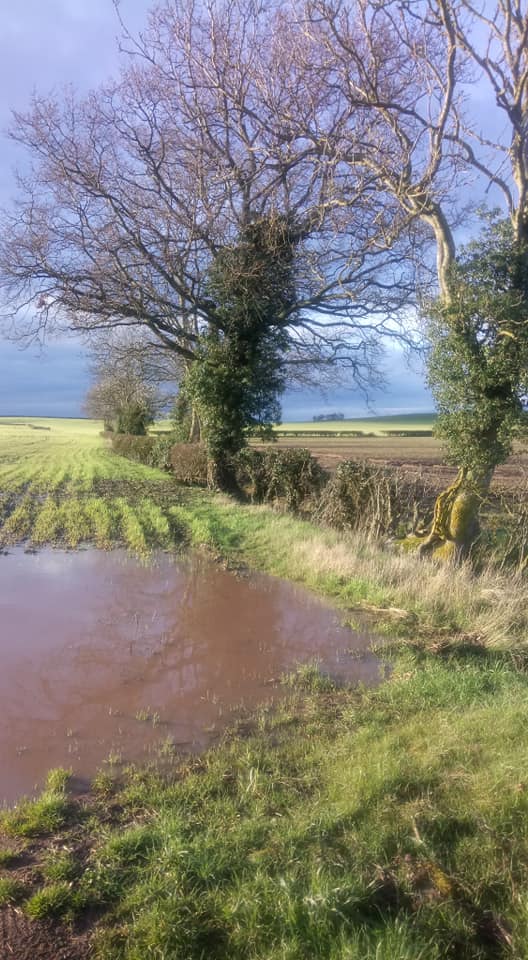Defending the sustainability and function
of British hedgerows
Every autumn in the UK, trillions of tonnes of foodstuff and acres of winter shelter are lost to tractor-driven blades, leaving neither foliage or forage behind to protect and feed wild creatures through the winter.
Cutting back to the same line of growth every year destroys fruit-bearing growth, shelter and hibernation sites. Even the underbrush, a blanket of dead weeds at the base of the hedgerow, is removed. Ancient pleachers that would have been warm, safe hiding places are stripped of all cover. Exposed to the elements, denied a chance to support wildlife and unable to rejuvenate in time to provide adequate nest sites in spring, hedge lines are left barren and silent.
Landowners and hedge-cutting operators can do so much to change this -
the UK is now one of the most nature-depleted countries in the world.
Cutting back to the same line of growth every year destroys fruit-bearing growth, shelter and hibernation sites. Even the underbrush, a blanket of dead weeds at the base of the hedgerow, is removed. Ancient pleachers that would have been warm, safe hiding places are stripped of all cover. Exposed to the elements, denied a chance to support wildlife and unable to rejuvenate in time to provide adequate nest sites in spring, hedge lines are left barren and silent.
Landowners and hedge-cutting operators can do so much to change this -
the UK is now one of the most nature-depleted countries in the world.
Be a Hedgerow Defender!
Do something about this today!
Behind the picture above, see what the Nature Friendly Farming Network has to say on hedgerow management.
British Trust for Ornithology - Hedgerow Nesting Bird Report - March 2024 www.bto.org/our-science/publications/research-reports/breeding-periods-hedgerow-nesting-birds-england?dm_t=0,0,0,0,0
Download the article from the link given above, to discover -
on Page 7 - Greenfinch, Linnet and Yellowhammer have joined the Red List; Song Thrush, Dunnock, Bullfinch, Whitethroat and Wren are on the Amber List (of the 16 species selected for the survey - !)
On Page 11 we find that of these species, all the birds actively breeding after 31st August are on the Red List.
Page 16 tells us that species in arable landscapes lay later, on average by 15 days; threatened by hard cuts early in the 'open season'.
Page 19 cites Bullfinch, Song Thrush, Linnet, Goldfinch and Whitethroat as known to be breeding in late August.
Page 31 informs us that "fledglings unable to fly well ... are relying on thick cover to protect themselves from predators and weather". While few pairs were recorded actively caring for dependent young within scope of the survey, the need for adequate cover remains for all hedgerow-dependent species at all stages of development.
on Page 7 - Greenfinch, Linnet and Yellowhammer have joined the Red List; Song Thrush, Dunnock, Bullfinch, Whitethroat and Wren are on the Amber List (of the 16 species selected for the survey - !)
On Page 11 we find that of these species, all the birds actively breeding after 31st August are on the Red List.
Page 16 tells us that species in arable landscapes lay later, on average by 15 days; threatened by hard cuts early in the 'open season'.
Page 19 cites Bullfinch, Song Thrush, Linnet, Goldfinch and Whitethroat as known to be breeding in late August.
Page 31 informs us that "fledglings unable to fly well ... are relying on thick cover to protect themselves from predators and weather". While few pairs were recorded actively caring for dependent young within scope of the survey, the need for adequate cover remains for all hedgerow-dependent species at all stages of development.
Statement by Joanna Lumley DBE, February 2023, on the absence of hedgerow reference in SFI advisories:
"It’s hard to believe that the Government has decided to backtrack on its Sustainable Farming Initiative: knowing, as they well do, that hedgerows are the life-line for so many of our small wild animals and birds and that they stabilise the land and capture carbon; I urge them to think again and put nature first on their agenda.
They must act immediately: they may not be forgiven if they do not.”
"It’s hard to believe that the Government has decided to backtrack on its Sustainable Farming Initiative: knowing, as they well do, that hedgerows are the life-line for so many of our small wild animals and birds and that they stabilise the land and capture carbon; I urge them to think again and put nature first on their agenda.
They must act immediately: they may not be forgiven if they do not.”
Image credit Gemma Levine
Since Joanna made this comment, the SFI now includes hedgerow guidelines -
but we're about to face another spell without legislation.
Parliament debated the Hedgerow Act in the wake of DEFRA's consultation last year on 24th January 2024 - read the brief here
Cutting hedgerow back to bare wood every year prevents it from fruiting and flowering,
Birds and small mammals starve without these food reserves.
The practice strips out winter shelter and spring nesting sites,
Barren sticks offer no protection from harsh weather,
failing to regenerate in time for breeding pairs in spring.
Compromising the root system, and reducing capacity for carbon absorption -
with little or no foliage left on it to capture carbon and utilise the water table.
Each winter that passes is taking more wild lives year on year as this practice continues to be 'the norm'.
Biodiversity, surface water retention and air quality are directly affected by hedgerow viability.
In the last 20 years, the popularity of zealous over-cutting has led to losses on an unprecedented scale.
Species that were once familiar and abundant are now absent from our countryside as a result.
Click here for a (sample) list of those we have lost
Birds and small mammals starve without these food reserves.
The practice strips out winter shelter and spring nesting sites,
Barren sticks offer no protection from harsh weather,
failing to regenerate in time for breeding pairs in spring.
Compromising the root system, and reducing capacity for carbon absorption -
with little or no foliage left on it to capture carbon and utilise the water table.
Each winter that passes is taking more wild lives year on year as this practice continues to be 'the norm'.
Biodiversity, surface water retention and air quality are directly affected by hedgerow viability.
In the last 20 years, the popularity of zealous over-cutting has led to losses on an unprecedented scale.
Species that were once familiar and abundant are now absent from our countryside as a result.
Click here for a (sample) list of those we have lost
Hedgerows like this offer no protection to wildlife or livestock.Which species
are most at risk? |
Behind every picture there's a story.
|
Nothing can survive without food and shelter, left open to the elements.What about
carbon footprint? |
Want
Write to DEFRA - guidelines for letters are linked to the picture above.
Write to your MP - there has never been a more important time to do so as Parliament is discussing hedgerows now! Scroll down to find the address link.
Wherever there is potential to turn the tide on hedgerow management,
we have to take that opportunity before cascade failure sets in.
The hedgerow is unique to the British landscape, the ecosystem it supports is irreplaceable.
While hedgerows require management to keep them viable and stop them from becoming tree lines,
sensitive techniques need to be adopted and supported by the Government and landowners alike.
Write to your MP - there has never been a more important time to do so as Parliament is discussing hedgerows now! Scroll down to find the address link.
Wherever there is potential to turn the tide on hedgerow management,
we have to take that opportunity before cascade failure sets in.
The hedgerow is unique to the British landscape, the ecosystem it supports is irreplaceable.
While hedgerows require management to keep them viable and stop them from becoming tree lines,
sensitive techniques need to be adopted and supported by the Government and landowners alike.
"Hedges help to stop flooding, sustain flora and fauna, provide interest to all. They protect land and provide shelter for animals. There are so many benefits; we have to stop all this destruction. Furthermore, 'hedges are brilliant at capturing carbon. A new hedgerow can absorb the carbon produced by a car travelling over 600 miles'. Evidence suggests they are natural barriers to harmful air pollution in our streets if they are at the level of pedestrians. What is there not to like about this?"
Diana W
See many more statements from concerned people on the Comments page
Diana W
See many more statements from concerned people on the Comments page
A healthy hedge should look like this.
Naturally bushy, no attempt at topiary, full cover at the base and canopy lines.
Where you see blossom, there will be fruit in the autumn.
On most of the hedgerows we see now, there is no blossom.
The hedges pictured below cannot develop greenery and cover by early spring.
No fruit, no shelter, no nest sites, no sustainable growth.
Photo courtesy : © Chris Gomersall/2020 Vision
Suffolk Wildlife Trust - the Wildlife Trusts Library
Naturally bushy, no attempt at topiary, full cover at the base and canopy lines.
Where you see blossom, there will be fruit in the autumn.
On most of the hedgerows we see now, there is no blossom.
The hedges pictured below cannot develop greenery and cover by early spring.
No fruit, no shelter, no nest sites, no sustainable growth.
Photo courtesy : © Chris Gomersall/2020 Vision
Suffolk Wildlife Trust - the Wildlife Trusts Library
Concerned? Write to your MP!
Manage the hedgerows on your land sustainably - follow the advisories found throughout this site!
Contact organisations, politicians, councils, newspapers...
talk to fellow farmers, friends and neighbours!
Help changes in practice to gain ground before cascade failure
irreversibly destroys sensitive wild populations.
CONTACT US: [email protected]
